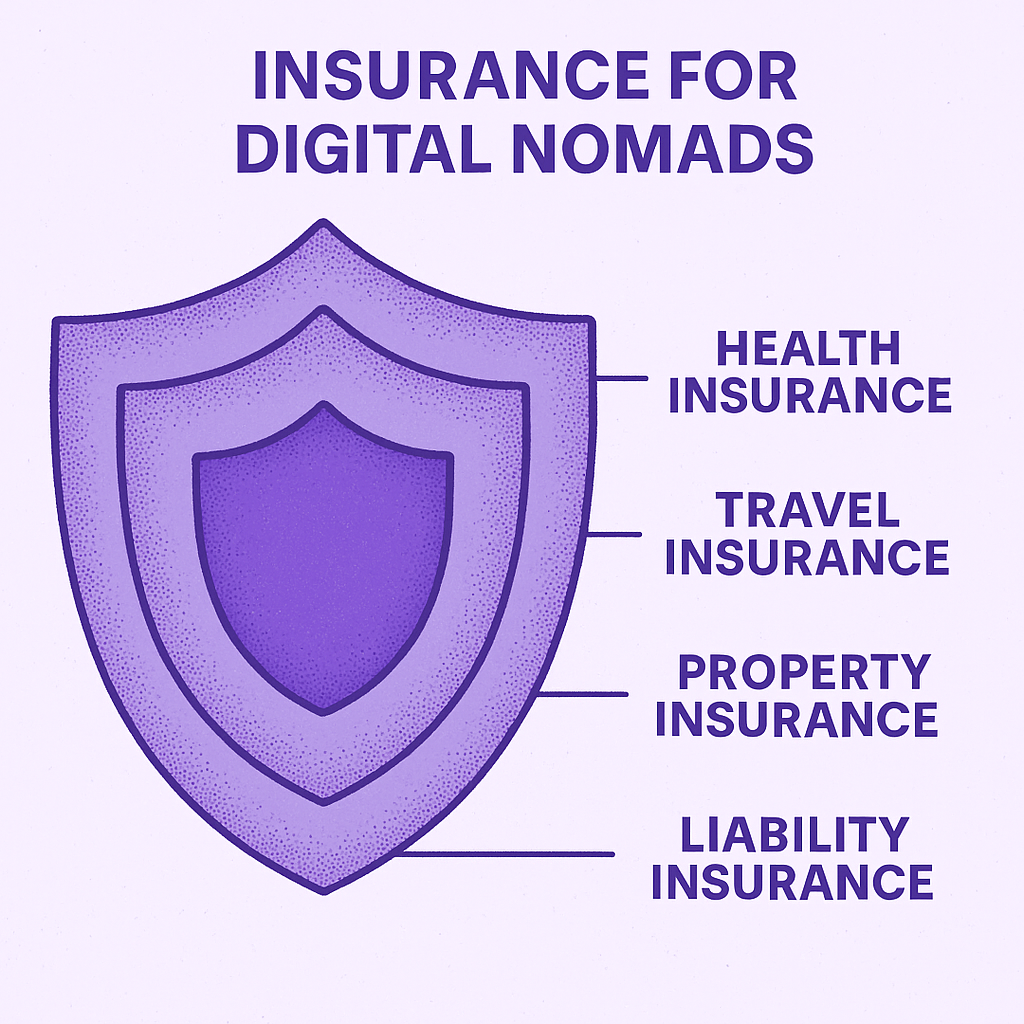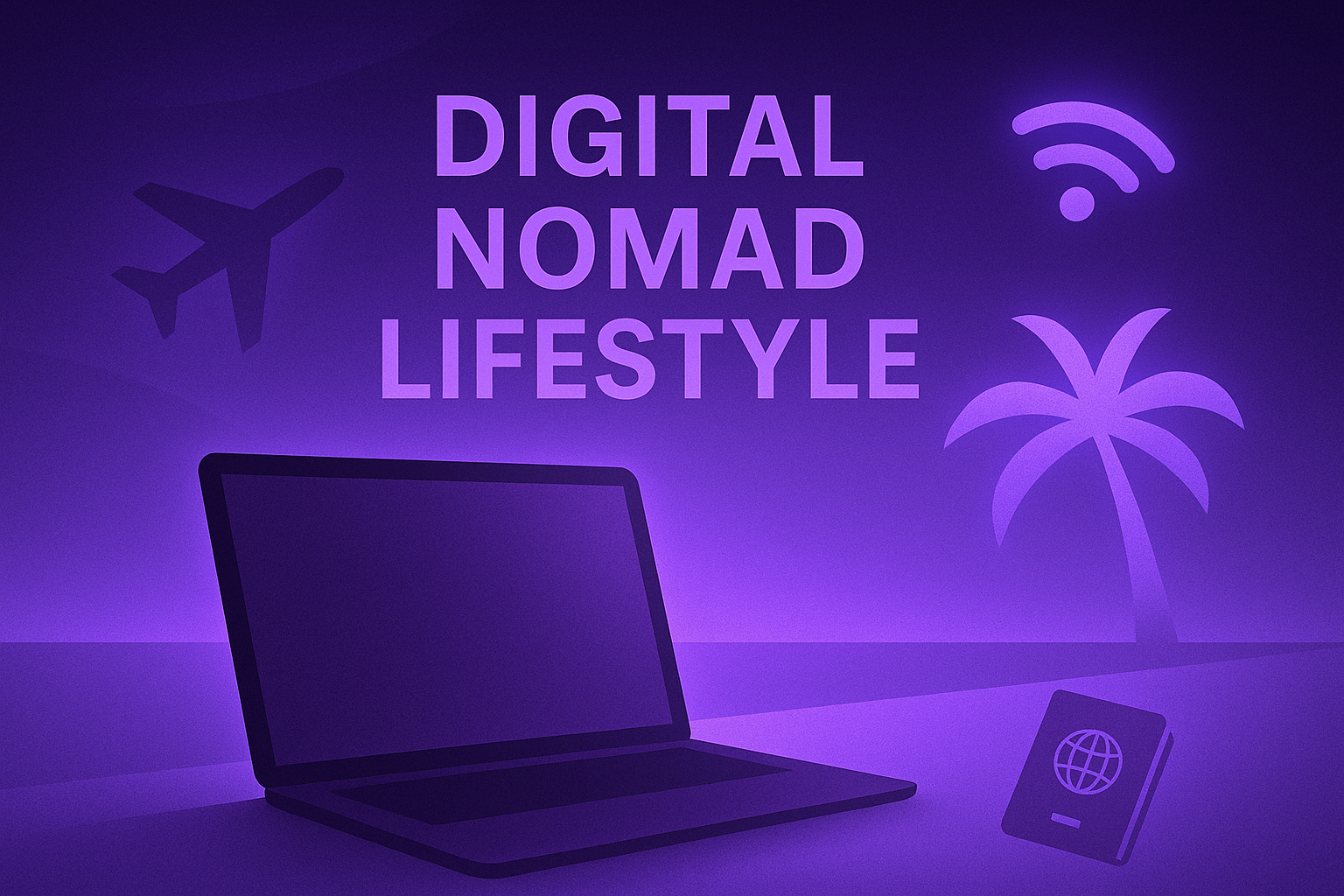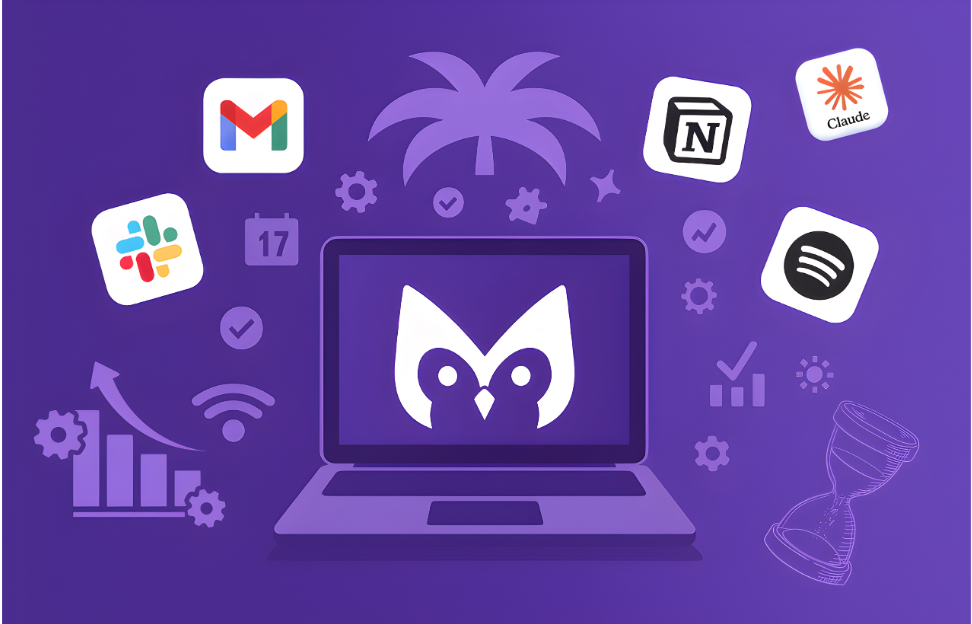The digital nomad movement has exploded from a niche lifestyle experiment to a mainstream career path, with 18.1 million Americans identifying as digital nomads in 2025, according to MBO Partners research. This comprehensive guide reveals everything you need to know about the digital nomad lifestyle, from basic definitions to actionable steps for getting started.
What Is Digital Nomad Lifestyle?
Digital nomad lifestyle is a way of living that allows people to work remotely using technology while traveling and living in different locations around the world. Unlike traditional remote workers who stay in one city, digital nomads leverage location independence to experience different cultures, climates, and communities while maintaining their careers.
The core elements that define digital nomad lifestyle include:
Technology-Enabled Work: Digital nomads rely on laptops, smartphones, and internet connectivity to perform their jobs. Whether they’re freelance writers, software developers, marketing consultants, or online entrepreneurs, their work exists entirely in the digital realm.
Location Independence: The freedom to work from anywhere is fundamental to nomadic living. Digital nomads might spend three months in Bali, six months in Mexico City, and a year in Lisbon – all while maintaining consistent income streams.
Intentional Mobility: Unlike tourists, digital nomads move with purpose. They research destinations for factors like cost of living, internet infrastructure, time zones, and visa requirements. Many follow seasonal patterns, chasing favorable weather and optimal working conditions.
The lifestyle emerged in the early 2000s but gained massive momentum during the COVID-19 pandemic when remote work became normalized. Countries worldwide began launching digital nomad visas, recognizing the economic benefits of attracting location-independent workers.

Who Is the Digital Nomad Lifestyle For?
The digital nomad lifestyle is ideal for location-independent professionals who value freedom, adventure, and cultural experiences over traditional career stability. However, it’s not suitable for everyone and requires specific personality traits and circumstances to succeed.
Ideal Candidates for Digital Nomad Life:
Self-Motivated Professionals: Digital nomads must be disciplined self-starters who can maintain productivity without office supervision. Procrastinators and people who need constant direction often struggle with nomadic work arrangements.
Tech-Savvy Workers: Basic technical skills are essential. You don’t need to be a programmer, but comfort with digital tools, troubleshooting internet issues, and managing online workflows is crucial.
Adaptable Personalities: Nomads face constant change – new currencies, languages, customs, and challenges. Rigid planners who need predictable routines may find the lifestyle overwhelming.
Financially Stable Individuals: While nomading can be budget-friendly, it requires upfront investment and financial cushions for emergencies. Most successful nomads have 3-6 months of expenses saved before starting.
People with Minimal Local Ties: Those with young children, aging parents, or location-dependent businesses face additional complexity. While family nomading is possible, it requires more planning and resources.
Career Stages That Work Best:
-
- Early-career professionals (25-35) seeking adventure before settling down
-
- Mid-career individuals (35-45) with established remote income streams
-
- Semi-retired or financially independent people pursuing passion projects
The lifestyle tends to attract millennials and Gen Z workers who prioritize experiences over material possessions, though successful nomads span all age groups.
How Digital Nomads Make Money: Jobs and Income Streams
Digital nomads typically earn income through freelancing, remote employment, consulting, or online businesses that can be managed entirely through internet connections. The key requirement is that work output doesn’t depend on physical presence in a specific location.
High-Demand Nomad Professions:
Technology Roles: Software developers, web designers, cybersecurity specialists, and data analysts command high hourly rates and abundant remote opportunities. Programming languages like Python, JavaScript, and cloud platforms offer excellent nomad career paths.
Creative Services: Content writers, graphic designers, video editors, and digital marketers serve clients globally. Platforms like Upwork, Fiverr, and 99designs connect creative nomads with project-based work.
Business Consulting: Management consultants, financial advisors, and strategy specialists leverage expertise to serve clients remotely via video calls and collaboration tools.
Online Education: Course creators, online tutors, and educational consultants capitalize on the growing e-learning market. Teaching English online remains popular among nomads in lower cost-of-living countries.
E-commerce and Digital Products: Dropshipping businesses, affiliate marketers, and digital product creators generate passive income streams ideal for nomadic lifestyles.
Income Strategies for Nomadic Success:
Diversification: Successful nomads rarely depend on single income sources. They might combine freelance projects, passive income products, and part-time remote employment to create stable monthly earnings.
High-Value Skills: Nomads who earn $50,000+ annually typically offer specialized, high-demand services. Generic skills like basic writing or data entry rarely support comfortable nomadic living.
Client Relationships: Building long-term client relationships provides income stability. Many nomads transition from project-based work to ongoing retainer agreements with trusted clients.
Time Zone Optimization: Strategic location choices allow nomads to align their working hours with high-paying markets like North America and Europe while enjoying lower living costs in Asia or Latin America.
Essential Requirements for Digital Nomad Success
Digital nomads need reliable technology equipment, stable internet access, proper documentation, comprehensive insurance coverage, and strong self-management skills to work effectively from anywhere. These requirements form the foundation for sustainable nomadic careers.
Technology Stack Essentials:
Primary Laptop: A lightweight, durable laptop with 8+ hours battery life is crucial. MacBook Air, Dell XPS, and ThinkPad models are nomad favorites for their reliability and global service networks.
Backup Devices: Tablet or secondary laptop prevents work disruption if primary equipment fails. Many nomads carry smartphones capable of mobile hotspot functionality as internet backups.
Power Management: Universal power adapters, portable chargers, and power banks ensure devices stay charged across different electrical systems and during long travel days.
Communication Tools: Noise-canceling headphones for video calls, external webcam for professional appearances, and portable microphone for content creators enhance work quality.
Internet Connectivity Requirements:
Speed Minimums: Most nomad work requires 25+ Mbps download speeds for reliable video calls, file uploads, and cloud application usage. Bandwidth-intensive roles like video editing need 50+ Mbps or higher.
Backup Connections: Local SIM cards, international data plans, and pocket WiFi devices provide redundancy when primary internet fails. Co-working spaces offer professional backup locations.
VPN Services: Virtual private networks protect sensitive data on public WiFi and access geo-restricted content. ExpressVPN and NordVPN are popular choices among nomads.
Legal and Financial Infrastructure:
Passport Validity: Maintain passport with 6+ months validity and multiple blank pages for visa stamps. Many nomads carry second passport for visa optimization.
Banking Solutions: Multi-currency accounts, low foreign transaction fee cards, and international ATM access reduce financial friction. Revolut, Charles Schwab, and local banking partnerships serve nomad needs.
Tax Planning: Understand tax obligations in home country and visited destinations. Many nomads consult tax professionals specializing in international remote work.
Insurance Coverage: Comprehensive travel health insurance, equipment protection, and liability coverage protect against nomad-specific risks.
How to Design Your Digital Nomad Lifestyle
Designing a successful digital nomad lifestyle requires strategic planning across finances, skills development, destination research, and gradual transition from traditional employment to location independence. Most successful nomads spend 6-12 months preparing before making the full transition.
Financial Foundation Planning:
Income Stabilization: Secure reliable remote income before departing. This might involve transitioning current employment to remote arrangement, building freelance client base, or launching online business with proven revenue streams.
Emergency Fund: Save 6-12 months of living expenses to handle emergencies, equipment replacement, and income fluctuations. Nomad life includes unexpected costs like visa runs, flight changes, and medical expenses.
Budget Research: Calculate realistic monthly expenses for target destinations including accommodation, food, transportation, insurance, and entertainment. Websites like Nomad List provide crowd-sourced cost data for popular destinations.
Skills and Career Development:
Remote Work Skills: Develop proficiency in digital collaboration tools like Slack, Zoom, Asana, and Google Workspace. Strong written communication becomes crucial when face-to-face interaction is limited.
Marketable Expertise: Invest time building skills that command premium remote rates. This might involve coding bootcamps, digital marketing certifications, or professional development in your existing field.
Portfolio Development: Create compelling online portfolio showcasing your work, testimonials, and remote work capabilities. Professional website and LinkedIn optimization help attract nomad-friendly opportunities.
Destination and Logistics Strategy:
Climate and Season Planning: Research weather patterns, rainy seasons, and optimal visiting times for target destinations. Many nomads follow seasonal migrations to maintain preferred climates year-round.
Visa Requirements: Understand tourist visa limits, digital nomad visa options, and visa run requirements for extended stays. Some destinations offer 90-day tourist visas while others provide 1-2 year nomad-specific permits.
Infrastructure Assessment: Evaluate internet reliability, co-working space availability, healthcare quality, and expat community presence in potential destinations.
Gradual Transition Approach:
Start with shorter nomadic experiments – perhaps month-long remote work trials or extended vacations where you maintain work responsibilities. This helps identify challenges and refine systems before committing to full nomadic lifestyle.
Destinations and Living Arrangements
Popular digital nomad destinations typically offer reliable internet infrastructure, affordable cost of living, vibrant expat communities, and favorable visa policies for extended stays. The choice of destination significantly impacts both lifestyle quality and financial sustainability.
Tier 1 Nomad Destinations:
Bali, Indonesia: Canggu and Ubud offer established nomad infrastructure with co-working spaces, fast internet, and large international communities. Cost of living ranges $900-2,000 monthly depending on location and lifestyle with B211A visa allowing initial 60-day stays, extendable twice for up to 180 days total or the newer E33G Remote Worker Visa launched in 2024.
Mexico City and Playa del Carmen: Mexico’s 180-day tourist visa, proximity to US time zones, and diverse cultural offerings attract North American nomads. Monthly costs range $1,000-2,000 depending on lifestyle preferences.
Lisbon, Portugal: D8 Digital Nomad visa providing pathway to EU residency for remote workers, excellent infrastructure, and growing tech scene make Portugal increasingly popular. Higher costs ($1,500-2,500 monthly) balanced by quality of life and European access.
Medellín, Colombia: Year-round spring weather, low cost of living ($600-1,200 monthly), and improving internet infrastructure attract budget-conscious nomads. Growing co-working and social scene.
Bangkok and Chiang Mai, Thailand: Established nomad hubs with excellent food, healthcare, and transport infrastructure. Tourist visas allow 60-day stays with extension options. Monthly costs $700-1,500.
Accommodation Strategies:
Short-term Rentals: Airbnb and Vrbo provide flexibility for destination testing and seasonal moves. Monthly discounts often available for stays exceeding 28 days.
Co-living Spaces: Purpose-built nomad accommodations include Selina, Outsite, and local co-living brands. These combine accommodation, workspace, and social community but typically cost premium rates.
Long-term Apartments: Direct rental agreements for 3+ month stays often provide best value and authentic local experience. Requires more research and language skills but significant cost savings.
Nomad-Specific Considerations:
Internet Redundancy: Always verify primary internet speed and backup options before committing to accommodation. Many nomads carry portable WiFi devices as additional backup.
Workspace Setup: Ensure adequate desk space, comfortable seating, and good lighting for a productive work environment. External monitor capability enhances productivity for extended stays.
Community Access: Proximity to co-working spaces, nomad meetups, and expat communities reduces isolation and provides networking opportunities.
Challenges and How to Overcome Them
The biggest challenges facing digital nomads include social isolation, time zone management, healthcare access, tax compliance, and maintaining work-life boundaries while constantly traveling. Understanding these obstacles helps nomads prepare effective solutions.
Social and Emotional Challenges:
Loneliness and Isolation: Constant movement disrupts relationship building and can lead to superficial connections. Combat this by joining nomad communities, attending co-working events, and maintaining regular video calls with friends and family back home.
Cultural Adjustment Fatigue: Constantly adapting to new languages, customs, and social norms becomes exhausting. Allow buffer time between destinations and choose some familiar environments to recharge mentally.
Decision Fatigue: Nomads make countless daily decisions about accommodation, transportation, food, and logistics. Develop systems and routines to minimize decision overload.
Professional Challenges:
Time Zone Conflicts: Working with clients or teams across multiple time zones creates scheduling complexity. Use tools like WorldTimeBuddy and Calendly to streamline scheduling, and be transparent about your availability windows.
Internet Reliability: Poor connectivity can derail important calls or project deadlines. Always have backup plans including mobile hotspots, co-working spaces, and flexible meeting schedules.
Professional Isolation: Missing office interactions and team building can impact career development. Proactively schedule virtual coffee chats, join professional online communities, and attend industry events when possible.
Health and Safety Concerns:
Healthcare Access: Finding quality medical care in foreign countries poses risks, especially for chronic conditions. Research healthcare systems before traveling and maintain comprehensive international health insurance.
Mental Health Support: Access to familiar mental health resources becomes limited while nomading. Consider online therapy options and develop strong self-care routines.
Physical Health Maintenance: Irregular schedules, poor ergonomics, and limited exercise options impact physical wellbeing. Prioritize consistent sleep schedules, ergonomic workspace setup, and regular physical activity.
Financial and Legal Complexity:
Tax Obligations: Multi-country tax requirements create compliance complexity. Consult international tax professionals and maintain detailed records of income and expenses by country.
Banking Challenges: Accessing funds, managing multi-currency expenses, and maintaining banking relationships while abroad requires planning. Research nomad-friendly banking solutions and carry multiple payment methods.
Solutions and Best Practices:
Successful nomads develop systematic approaches to common challenges. They build strong online communities, maintain consistent routines despite changing locations, and invest in quality tools and services that support nomadic lifestyle demands.
Is Digital Nomad Lifestyle Worth It? Pros and Cons
Digital nomad lifestyle is worth it for individuals who value freedom, cultural experiences, and personal growth over traditional career advancement and social stability. However, the benefits and drawbacks affect different people differently based on personality, career stage, and life goals.
Major Benefits of Nomadic Living:
Personal Freedom and Flexibility: The ability to choose your environment, schedule, and lifestyle provides unmatched autonomy. Nomads can chase optimal weather, explore personal interests, and design days around peak productivity periods.
Cultural Enrichment: Living in different countries provides deep cultural understanding impossible through traditional tourism. Learning languages, experiencing local customs, and building international friendships create lasting personal growth.
Financial Optimization: Earning developed-world income while living in lower-cost destinations can dramatically improve financial position. Many nomads save 30-50% more than they could in expensive home cities.
Professional Development: Remote work skills, cultural adaptability, and problem-solving abilities developed through nomadic living are increasingly valuable in global business environments.
Expanded Perspective: Exposure to different economic systems, social structures, and ways of life challenges assumptions and promotes creative thinking.
Significant Drawbacks and Costs:
Relationship Challenges: Maintaining deep friendships and romantic relationships becomes difficult with constant movement. Many nomads struggle with surface-level connections and dating complications.
Career Limitations: Some career paths require physical presence for advancement. Missing office politics, networking events, and team building can limit professional growth opportunities.
Stability Sacrifice: Lack of permanent home base, consistent routine, and familiar support systems creates ongoing stress for some personalities.
Hidden Costs: In reality, visa fees, travel insurance, equipment replacement, and premium accommodation rates can make nomadic living more expensive than initially calculated.
Administrative Burden: Constant research, planning, and logistics management becomes time-consuming. Visa applications, accommodation booking, and travel arrangements require significant mental energy.
Who Should Consider Digital Nomad Lifestyle:
Ideal Candidates: Self-motivated professionals with established remote income, minimal local commitments, and strong desire for adventure and personal growth.
Poor Fits: Individuals needing social stability, career advancement requiring physical presence, or those uncomfortable with constant change and uncertainty.
The ROI Question:
For many nomads, the return on investment isn’t purely financial. In the long run, the lifestyle provides experiences, skills, and perspectives that contribute to long-term personal and professional value, despite the fact that short-term costs are often higher than traditional living arrangements.
Insurance and Legal Considerations
Digital nomad insurance typically includes international health coverage, travel protection, equipment insurance, and liability coverage designed for long-term travelers working remotely across multiple countries. Standard domestic health insurance and travel policies rarely provide adequate protection for nomadic lifestyles.
Essential Insurance Coverage Types:
International Health Insurance: Comprehensive medical coverage across multiple countries with direct billing to major hospitals. Look for policies covering emergency evacuation, chronic condition management, and mental health services. Companies like SafetyWing, Cigna Global, and IMG offer nomad-specific plans ranging $50-300 monthly.
Equipment Protection: Coverage for laptop, camera, and other expensive gear essential for nomad work. Policies should cover theft, damage, and loss during transit. Some providers offer “digital nomad equipment packages” with expedited replacement services.
Travel and Trip Protection: Coverage for flight cancellations, accommodation issues, and travel delays that could impact work commitments. Business travel policies often include coverage for missed client meetings and project delays.
Professional Liability: Protection against errors and omissions claims from clients, especially important for consultants and service providers working internationally.
Legal Considerations and Compliance:
Visa Requirements: Tourist visas typically prohibit work activities, even remote work for foreign employers. Digital nomad visas provide legal work authorization but aren’t available in all destinations. Consult immigration attorneys for complex situations.
Tax Obligations: Income tax requirements vary based on citizenship, residency status, and work location. US citizens face global income reporting regardless of location, while other nationalities may qualify for foreign earned income exclusions.
Business Registration: Freelancers and consultants may need local business licenses in countries where they perform work. Some nomads maintain business entities in nomad-friendly jurisdictions like Estonia or Dubai.
Contract and Employment Law: Remote work agreements should specify applicable jurisdiction for disputes and compliance requirements. Employment law varies significantly between countries, affecting worker protections and employer obligations.
Data Protection and Privacy: GDPR, CCPA, and other privacy regulations may apply to nomad work depending on client locations and data handling. VPN usage and data security practices require careful consideration.
Risk Management Strategies:
Documentation: Maintain detailed records of income sources, work locations, and tax payments across jurisdictions. Digital tools like Nomad Insurance and TaxNomad help track multi-country obligations.
Professional Consultation: International tax attorneys, immigration lawyers, and insurance brokers specializing in nomad situations provide valuable guidance for complex scenarios.
Continuous Monitoring: Laws and regulations change frequently, especially regarding digital nomad visas and remote work policies. Stay informed through nomad communities and professional resources.

Creating Your Digital Nomad Lifestyle Plan
A successful digital nomad lifestyle plan includes specific timelines for skill development, financial preparation, destination research, and gradual transition milestones over 6-12 months before departure. Rushing into nomadic living without proper preparation often leads to financial stress and lifestyle failure.
Phase 1: Foundation Building (Months 1-3)
Skills Assessment and Development: Evaluate current abilities against remote work requirements. Identify gaps in technical skills, communication abilities, or professional qualifications that could limit nomad opportunities.
Income Stream Validation: Test remote work capabilities with current employer or build freelance client base. Aim for 3-6 months of proven remote income before committing to nomadic lifestyle.
Financial Planning: Calculate realistic nomad budget including emergency funds, equipment costs, and destination-specific expenses. Open nomad-friendly banking accounts and research international money transfer options.
Legal Foundation: Research tax implications, insurance requirements, and visa strategies for target destinations. Consult professionals for complex situations involving multiple citizenship or existing business entities.
Phase 2: Preparation and Testing (Months 4-6)
Equipment Acquisition: Purchase and test all essential nomad gear including laptop, backup devices, power adapters, and travel accessories. Ensure everything fits comfortably in carry-on luggage.
Destination Research: Create shortlist of initial destinations based on visa requirements, cost of living, internet infrastructure, and personal interests. Connect with existing nomad communities in target locations.
Trial Runs: Take extended remote work vacations to test systems, identify challenges, and refine workflows. Start with familiar destinations before attempting more adventurous locations.
Accommodation Strategy: Research housing options including short-term rentals, co-living spaces, and local apartment markets. Develop booking strategies and backup plans for housing challenges.
Phase 3: Launch and Optimization (Months 7-12)
Soft Launch: Begin with 3-6 month nomadic experiment rather than permanent lifestyle change. This allows testing and adjustment without burning bridges.
Systems Refinement: Continuously optimize workflows, communication practices, and productivity systems based on real nomadic experience. Document what works and what needs improvement.
Community Building: Actively engage with local nomad communities, attend co-working events, and maintain relationships with home network. Balance exploration with consistent work performance.
Long-term Planning: Based on initial nomadic experience, develop 1-2 year plans including seasonal migration patterns, skill development goals, and relationship management strategies.
Success Metrics and Milestones:
Track progress using specific metrics like monthly income stability, client satisfaction scores, personal happiness indicators, and financial health measures. Regular assessment helps identify when adjustments are needed.
Contingency Planning:
Develop clear criteria for when nomadic lifestyle isn’t working and create “exit strategies” including return plans, emergency funding, and relationship repair approaches. Having backup plans reduces stress and allows more confident nomadic exploration.
FAQ
How much money do I need to start as a digital nomad? Most successful nomads start with $10,000-15,000 saved, including 6 months living expenses, equipment costs, and emergency funds. Monthly nomad expenses range from $800-3,000 depending on destinations and lifestyle preferences.
Can I be a digital nomad with no experience? While possible, it’s challenging. Most successful nomads have established remote work skills and income before starting. Consider building freelance experience or transitioning to remote arrangement first.
Do digital nomads pay taxes? Yes, tax obligations depend on citizenship and residency. US citizens pay federal taxes regardless of location, while other citizens may qualify for foreign income exclusions. Consult international tax professionals for guidance.
Is digital nomad lifestyle lonely? Loneliness is a common challenge, but active nomads build communities through co-working spaces, meetup groups, and online communities. The key is being proactive about social connections.
What happens if I get sick while nomading? Comprehensive international health insurance is essential. Research healthcare quality in destinations and maintain emergency contacts. Many nomads choose destinations with good medical infrastructure.
Can families be digital nomads? Yes, but family nomading requires more planning, higher budgets, and consideration of children’s education and healthcare needs. Many nomad families use international schools or online education programs.
How do nomads handle time zones with clients? Successful nomads choose destinations strategically to align with client time zones, use scheduling tools effectively, and communicate availability clearly. Some adjust their working hours to match client schedules.
What if a nomadic lifestyle doesn’t work out? Having exit strategies is important. Maintain some home connections, keep emergency funds for return travel, and don’t burn bridges with traditional employment. Many people try nomading temporarily before deciding.




